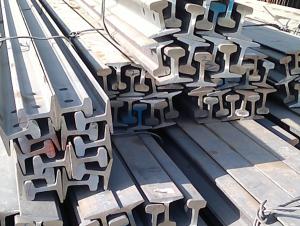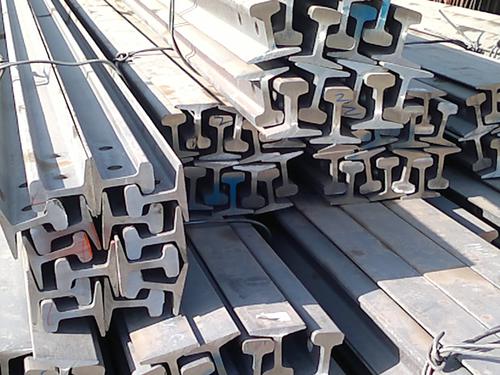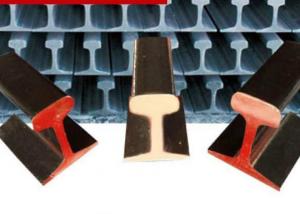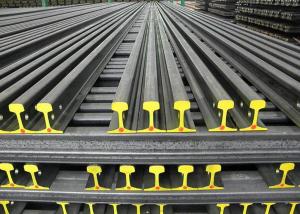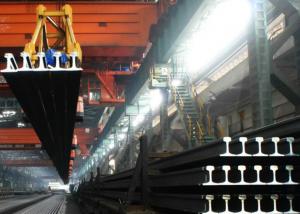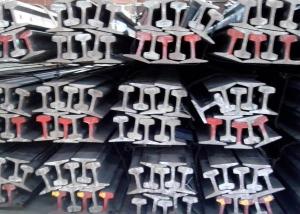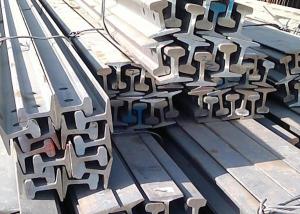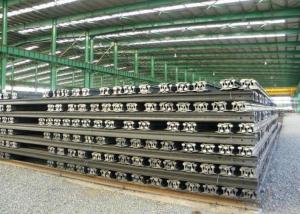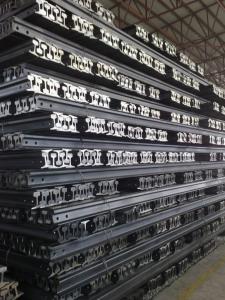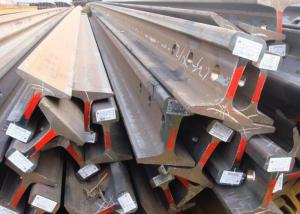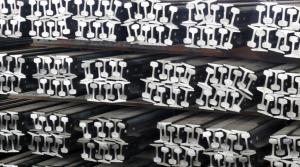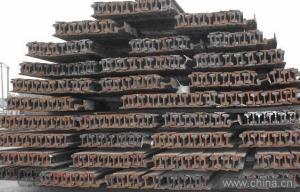Steel Heavy Rail 50MN, U71MN, 900A, 110A
- Loading Port:
- China main port
- Payment Terms:
- TT or LC
- Min Order Qty:
- 25 m.t.
- Supply Capability:
- 100000 m.t./month
OKorder Service Pledge
OKorder Financial Service
You Might Also Like
Product Description of Steel Heavy Rail 50MN, U71MN, 900A, 110A:
Sizes: 38kg, 43kg, 45kg, 50kg, 60kg.
Production Standard: GB2585-81, DIN, AREMA, JIS, BS, UIC, etc.
Material: 50MN, U71MN, 900A, 110A, etc.
Length: 6m-25m according to the requriements of the clients
Usages of Steel Heavy Rail 50MN, U71MN, 900A, 110A:
Light rail is mainly used in forest region, mines, factories and construction sites laid of the place such as temporary transport line and light motorcycles with line. Be widely used for railway, subway, transportation track, express, curve way, tunnel way and so on.
Packaging & Delivery of Steel Heavy Rail 50MN, U71MN, 900A, 110A:
1. Packing: it is nude packed in bundles by steel wire rod
2. Bundle weight: not more than 3.5MT for bulk vessel; less than 3 MT for container load
3. Marks:
Color marking: There will be color marking on both end of the bundle for the cargo delivered by bulk vessel. That makes it easily to distinguish at the destination port.
Tag mark: there will be tag mark tied up on the bundles. The information usually including supplier logo and name, product name, made in China, shipping marks and other information request by the customer.
If loading by container the marking is not needed, but we will prepare it as customer request.
4. Transportation: the goods are delivered by truck from mill to loading port, the maximum quantity can be loaded is around 40MTs by each truck. If the order quantity cannot reach the full truck loaded, the transportation cost per ton will be little higher than full load.
5. Delivered by container or bulk vessel
6. Delivery Time: All the Hot Rolled Steel Rail will be transpoted at the port of Tianjin, China within 30 days after receiving the advance payment by T/T or the orginal L/C at sight.
Inspection of Steel Heavy Rail 50MN, U71MN, 900A, 110A:
We will send the MTC of the factory to the clients dirrectly which contain the anlisis of the heat, chemiqul composition, phisical characteristicas, etc.
And our inspectors will arrive at the factory to meke the inspection of the size, length, weight and quantity before the transportation from the factory.
FAQ:
Q1: Why buy Materials & Equipment from OKorder.com?
A1: All products offered by OKorder.com are carefully selected from China's most reliable manufacturing enterprises. Through its ISO certifications, OKorder.com adheres to the highest standards and a commitment to supply chain safety and customer satisfaction.
Q2: What makes stainless steel stainless?
A2: Stainless steel must contain at least 10.5 % chromium. It is this element that reacts with the oxygen in the air to form a complex chrome-oxide surface layer that is invisible but strong enough to prevent further oxygen from "staining" (rusting) the surface. Higher levels of chromium and the addition of other alloying elements such as nickel and molybdenum enhance this surface layer and improve the corrosion resistance of the stainless material.
Q3: Can stainless steel rust?
A3: Stainless does not "rust" as you think of regular steel rusting with a red oxide on the surface that flakes off. If you see red rust it is probably due to some iron particles that have contaminated the surface of the stainless steel and it is these iron particles that are rusting. Look at the source of the rusting and see if you can remove it from the surface.
Images:

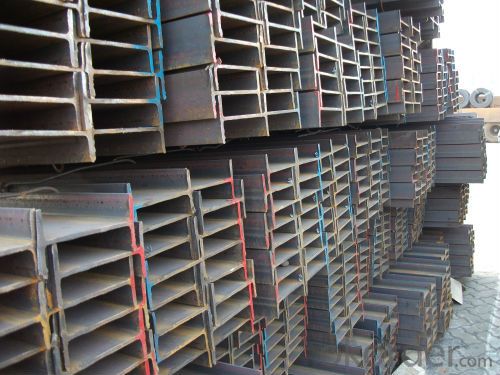
- Q: What is the maximum speed that steel rails can handle?
- The maximum speed that steel rails can handle depends on various factors such as the quality of the rail material, maintenance practices, and the design of the track. Generally, steel rails can handle speeds ranging from 80 to 125 miles per hour (130 to 200 kilometers per hour) for conventional rail lines. However, for high-speed rail systems, specially designed tracks and rails can support speeds of up to 186 miles per hour (300 kilometers per hour) or even higher.
- Q: How do steel rails handle the effects of extreme temperatures?
- Steel rails are designed to handle extreme temperatures quite effectively. The high thermal conductivity of steel allows it to quickly dissipate heat, preventing excessive expansion and minimizing the risk of track buckling during hot weather. Conversely, steel rails contract in cold temperatures, but their tensile strength and durability ensure they can withstand the resulting stresses without significant issues. Overall, steel rails have been engineered to accommodate extreme temperature changes while maintaining their structural integrity.
- Q: Are steel rails vulnerable to corrosion?
- Yes, steel rails are vulnerable to corrosion. Over time, exposure to moisture, oxygen, and other environmental factors can cause rusting and deterioration of steel rails, reducing their lifespan and compromising their structural integrity. Therefore, regular maintenance and protective coatings are necessary to prevent and control corrosion.
- Q: Why is the thermit reaction welded to rails instead of welded rails?
- Steel contains other added elements, while the thermit reaction produces only iron.
- Q: How do steel rails contribute to reducing train vibrations?
- Steel rails contribute to reducing train vibrations in several ways. Firstly, steel rails are extremely rigid and have high tensile strength. This means that they can effectively support the weight of a train and distribute the load evenly across the tracks. This reduces the amount of movement and vibration that occurs as the train passes over the rails. Secondly, steel rails are designed to have a smooth surface and precise dimensions. This allows the train wheels to roll smoothly along the tracks, without any unnecessary jolts or bumps. The smooth surface also minimizes the friction between the wheels and the rails, reducing vibrations caused by friction. Additionally, steel rails are manufactured to strict quality standards, ensuring that they are straight and properly aligned. This helps to maintain the stability of the tracks and prevents any irregularities that could cause vibrations. Furthermore, steel rails are often installed on a bed of ballast, which is a layer of crushed stones. This ballast acts as a cushion and absorbs some of the vibrations generated by the train. It also helps to distribute the load more evenly and provides additional stability to the tracks. Overall, the use of steel rails in train tracks plays a crucial role in reducing vibrations. Their rigidity, smooth surface, precise dimensions, and proper alignment all contribute to a smoother and more comfortable ride for passengers, while also minimizing wear and tear on the trains and tracks.
- Q: What is the role of steel rails in train braking systems?
- The role of steel rails in train braking systems is crucial for ensuring the safety and efficiency of train operations. Steel rails serve as the track on which the train moves, and they play a vital role in facilitating effective braking. When a train's braking system is engaged, brake pads or shoes press against the steel rails, creating friction that slows down or stops the train. The force generated by this friction between the brake pads and the steel rails helps to convert the kinetic energy of the moving train into heat energy, ultimately causing the train to decelerate or come to a complete stop. The steel rails must be carefully designed and maintained to ensure optimal braking performance. They need to have a specific shape and surface condition to provide sufficient grip for the brake pads or shoes. The rails should be smooth and free from any defects or contaminants that could hinder the braking process. Additionally, the alignment and levelness of the rails are critical factors in the braking system. Proper alignment ensures equal contact between the brake pads and the rails, while an even and level track helps distribute the braking force evenly across all wheels, minimizing wear and tear on the braking components. Regular inspection and maintenance of the steel rails are essential to identify any issues that could affect the braking system's performance. This includes checking for wear, cracks, or any other signs of damage that could compromise the friction between the brake pads and the rails. In conclusion, steel rails play a fundamental role in train braking systems by providing the necessary surface for friction and heat generation. Their proper design, maintenance, and alignment are crucial for ensuring safe and efficient braking operations in trains.
- Q: What are the safety measures for working on electrified steel rail tracks?
- When working on electrified steel rail tracks, some important safety measures include wearing appropriate personal protective equipment (PPE) such as insulated gloves and boots, maintaining a safe distance from live electrical lines, using insulated tools, and following proper lockout/tagout procedures to ensure that the power is turned off before any work is done on the tracks. It is also crucial to receive proper training on electrical safety and to regularly inspect and maintain the equipment and infrastructure to prevent accidents and electrical hazards.
- Q: How are steel rails transported to the construction site?
- Steel rails are typically transported to the construction site using specialized railcars or flatbed trucks equipped with cranes.
- Q: Can steel rails be used in elevated railway systems?
- Indeed, elevated railway systems can utilize steel rails. In fact, steel rails are the predominant rail type employed in railway systems worldwide, including elevated ones. Steel rails possess numerous advantages that render them appropriate for elevated railways. Firstly, steel is a robust and resilient material, capable of enduring heavy loads and high volumes of traffic. This is of utmost importance for elevated railways, as they frequently accommodate large numbers of passengers and cargo. Moreover, steel rails are comparably simple to install and maintain. In contrast to materials such as concrete, steel rails can be swiftly assembled and necessitate less maintenance over time. This is particularly crucial for elevated railway systems, where accessibility for maintenance and repairs can present more difficulties. Furthermore, steel rails furnish a smooth and stable surface for trains to travel upon, ensuring a comfortable and secure journey for passengers. The design of elevated rail systems is specifically optimized to minimize vibrations and noise, and steel rails contribute to the realization of this objective. It is worth emphasizing that steel rails are also cost-effective in comparison to alternative materials. The availability and versatility of steel render it an economically efficient option for elevated railway systems, which often involve extended stretches of tracks. In conclusion, steel rails are a suitable selection for elevated railway systems due to their durability, ease of installation and maintenance, smooth surface, and cost-effectiveness.
- Q: How are steel rails affected by changes in humidity?
- Changes in humidity generally do not have a significant impact on steel rails. Steel is a material that is highly durable and resistant to corrosion, and its properties remain relatively stable even when exposed to varying humidity conditions. However, if humidity levels are extremely high and combined with factors like saltwater or certain chemicals, there is a potential for accelerated corrosion on steel rails. In these cases, it is important to undertake proper maintenance and corrosion prevention measures, such as regular cleaning and the application of protective coatings, to ensure the longevity and performance of the steel rails. Nonetheless, the effect of humidity alone on steel rails is typically minimal and does not present a major concern.
Send your message to us
Steel Heavy Rail 50MN, U71MN, 900A, 110A
- Loading Port:
- China main port
- Payment Terms:
- TT or LC
- Min Order Qty:
- 25 m.t.
- Supply Capability:
- 100000 m.t./month
OKorder Service Pledge
OKorder Financial Service
Similar products
Hot products
Hot Searches
Related keywords
